Your bathroom may be among the smallest rooms in your house, but that doesn’t mean planning a bathroom remodel is simple. Whether you’re upgrading an outdated guest bathroom or transforming a space into a luxurious master bath, here’s a comprehensive guide on planning a bathroom remodel.
How Extensive Do You Want Your Bathroom Remodel to Be?
The first thing to consider when planning a bathroom remodel is the scope of the project. Bathroom remodels generally fall into three categories: minor, mid-scale, and major. Understanding the level of renovation you want to undertake will help set realistic expectations for cost, time, and complexity.
- Minor Remodel: A minor remodel involves surface-level changes such as replacing fixtures, updating finishes, or adding a fresh coat of paint without changing the overall layout of the space.
- Mid-Scale Remodel: This type of remodel may involve removing and replacing some elements, like flooring and fixtures, but without changing the room’s structure or layout.
- Major Remodel: A major remodel could include changing the layout, moving walls, expanding the room, and replacing nearly every element in the space.
Once you decide on the overall scope, you can begin to evaluate the timeframe for the project and determine if the plan suits your needs.
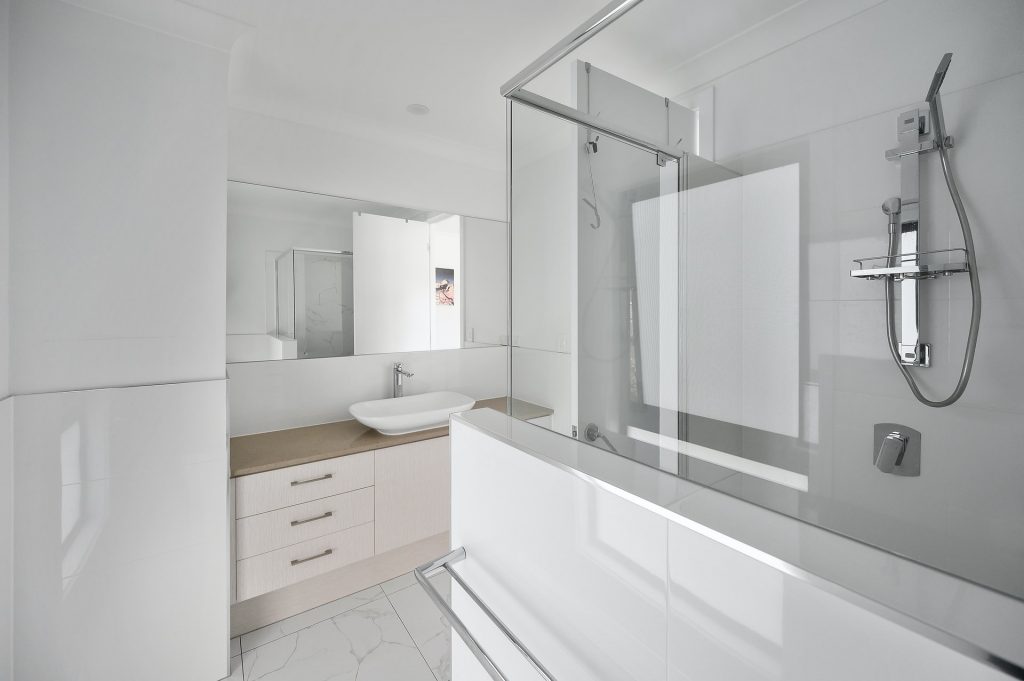
Photo by Filmreal Studio on Unsplash
Planning a Bathroom Remodel
Surface Modifications for a Quick Update
If you’re looking for a more affordable and quicker renovation, surface modifications are the way to go. In this case, you’ll leave the existing layout and plumbing intact, focusing on updating visible surfaces. This could involve replacing worn-out tiles, installing new paint, or updating the vanity or faucets.
This is a great option for those who are happy with the current layout of the bathroom but want to refresh its look.
Removing Everything and Starting Over
For those seeking a more dramatic change, starting from scratch may be the way to go. This involves removing everything from the bathroom, including the fixtures, flooring, and possibly even the walls, while keeping the existing layout. A new tub, shower, toilet, and sink can all be installed, along with new plumbing fixtures and lighting.
While this type of remodel won’t change the layout of your bathroom, it provides the opportunity to replace all elements for a completely updated look.
Changing the Layout for a Complete Transformation
If you’re looking for a full transformation, changing the layout of the bathroom may be the best option. This could include removing or moving walls, expanding the bathroom space, or even switching out the location of the toilet, sink, or shower. This extensive remodeling will likely require structural changes to the room and involve more complicated plumbing and electrical work.
Layout changes are often pursued when homeowners want to expand a small bathroom or turn a guest bathroom into a more functional and luxurious master bath.
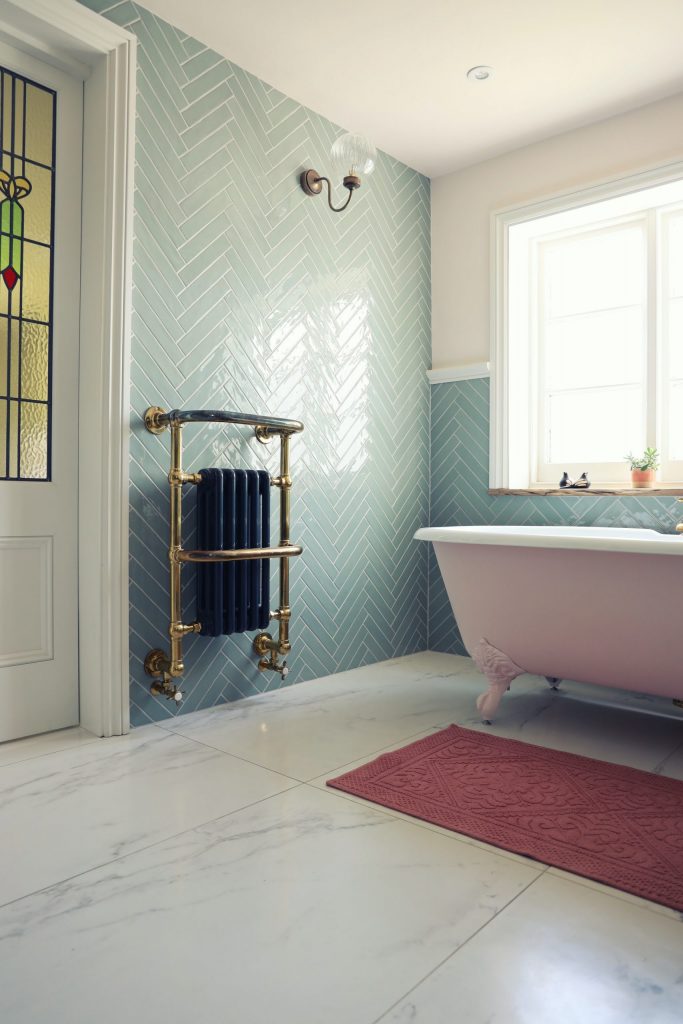
Photo by Dan Counsell on Unsplash
How Much Will a Bathroom Remodel Cost?
The cost of remodeling a bathroom can vary greatly depending on the level of renovation. On average, a minor surface remodel could cost between $10,000 and $12,000. Mid-scale renovations that replace fixtures and flooring may range from $15,000 to $18,000. For a major remodel, which can include layout changes and high-end finishes, the cost could be anywhere from $30,000 to $100,000 or more.
This price range includes both the cost of materials (such as tiles, countertops, and fixtures) and the cost of labor (plumbers, electricians, and contractors).
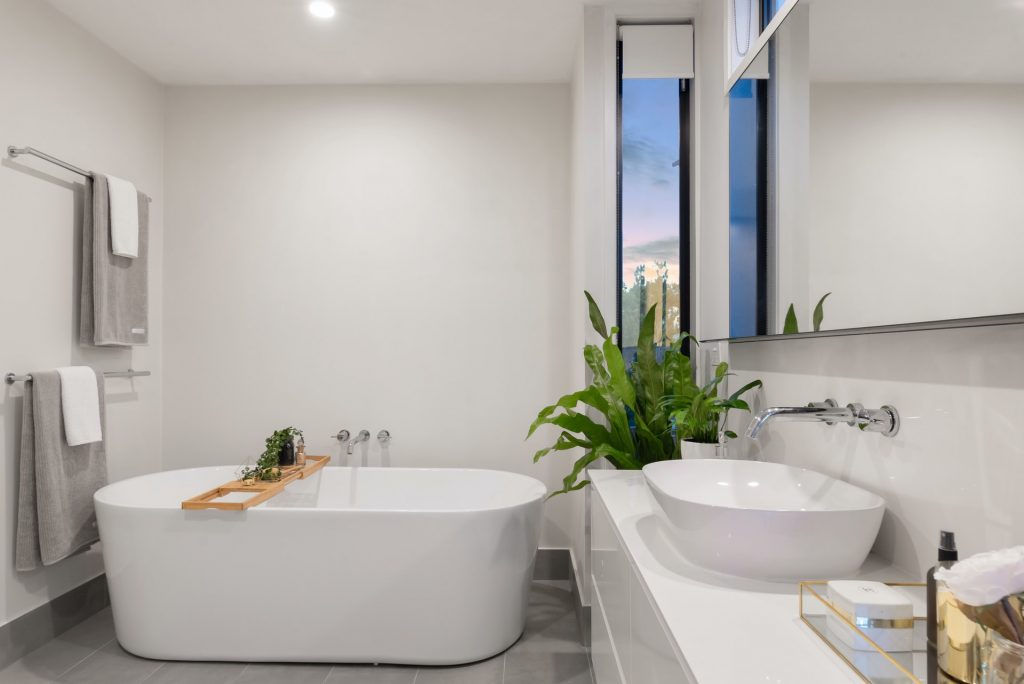
Photo by Steven Ungermann on Unsplash
Should You Renovate Your Bathroom Yourself or Hire Experts?
One of the most significant decisions when planning a bathroom remodel is whether to take on the project yourself or hire professionals. While DIY remodeling may seem appealing to save on costs, some tasks, such as plumbing, electrical work, and intricate tiling, are best left to the experts.
Assess the complexity of your project before deciding. If you’re only replacing a few surface elements, you may feel comfortable doing the work yourself. For more significant projects, such as changing the layout or replacing plumbing, hiring professionals is highly recommended. Always check that contractors are licensed, and gather quotes from multiple professionals to ensure you’re getting the best value.
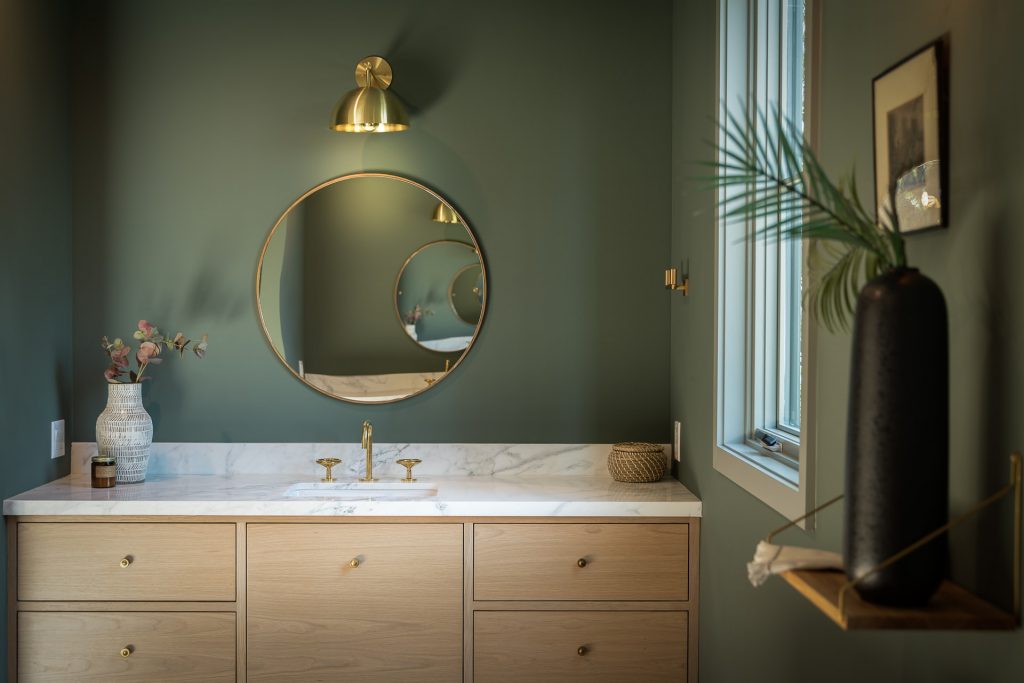
Photo by Watermark Designs on Unsplash
How Much Time Will a Bathroom Remodel Take?
The time it takes to complete a bathroom remodel depends on the scale of the project. A minor remodel could take just a few days, while a major remodel may take several weeks or even months. Here’s an idea of how long different aspects of the remodel will take:
- Bathtub or Shower Installation: A prefabricated shower or bathtub can be installed in as little as a few days, while custom tiling may take a week or more.
- Painting: Once the major elements have been removed, painting can typically be done in 2-3 days.
- Flooring: Installing new flooring may take a week, depending on the material and the size of the room.
- Countertops, Cabinets, and Sinks: Expect installation of these items to take between seven and ten days.
Additional Tips for Planning a Bathroom Remodel
- Use Monochromatic Colors: Light, neutral colors can make a small bathroom feel more spacious and reflect light. Consider using a monochromatic color palette with high-gloss finishes to maximize the space.
- Ensure Proper Ventilation: Moisture control is crucial in a bathroom. Make sure to install built-in fans and ventilation systems to keep the space dry and free of mold.
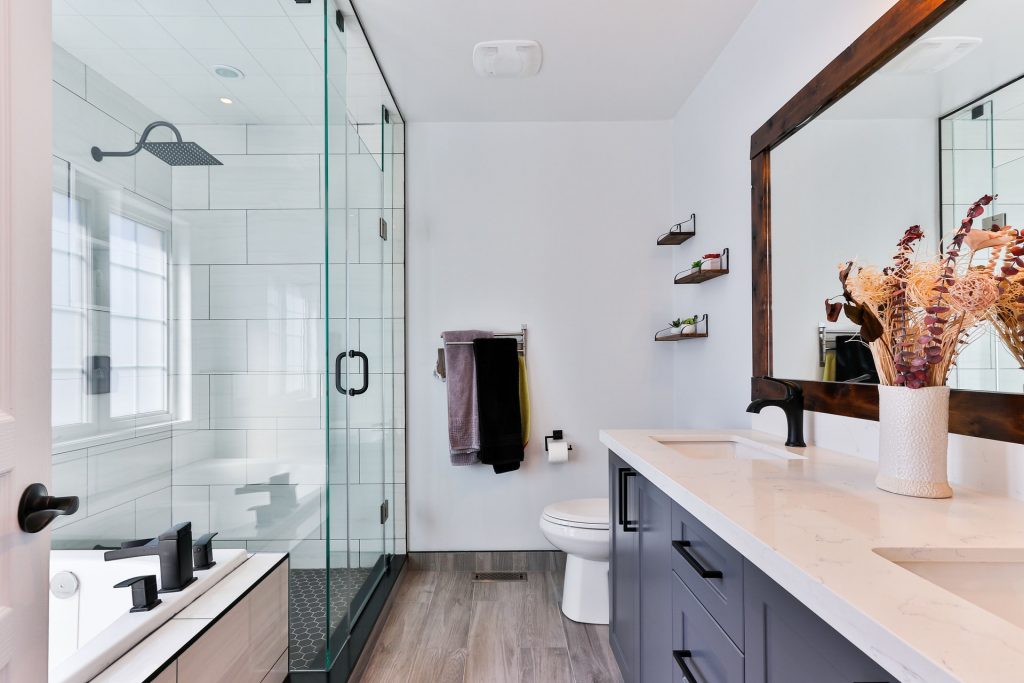
Photo by Sidekix Media on Unsplash
Planning a bathroom remodel can feel like a daunting task, but with careful consideration and clear goals, it can be a rewarding process. Whether you’re looking for a simple update or a complete transformation, understanding your needs, budget, and the scope of your project will help you achieve the bathroom of your dreams. Remember, a well-planned bathroom remodel can increase your home’s value and provide a space you’ll enjoy for years to come.

